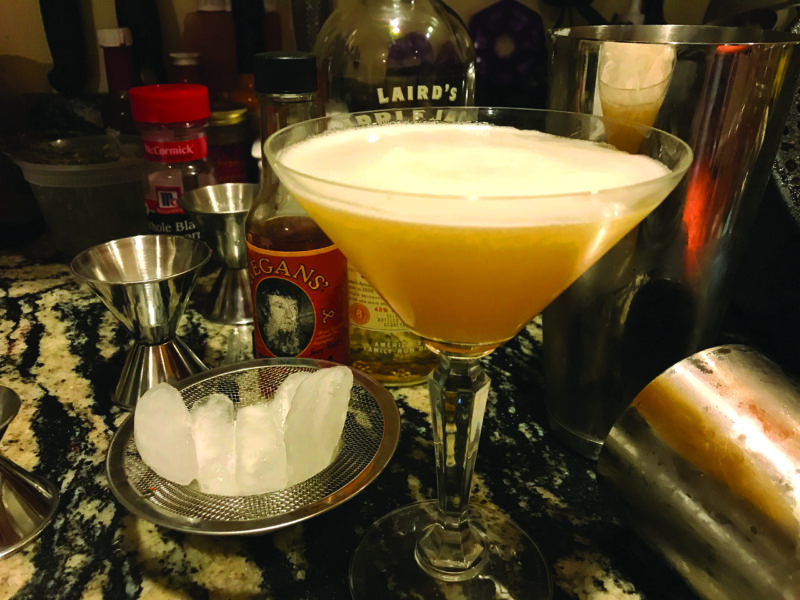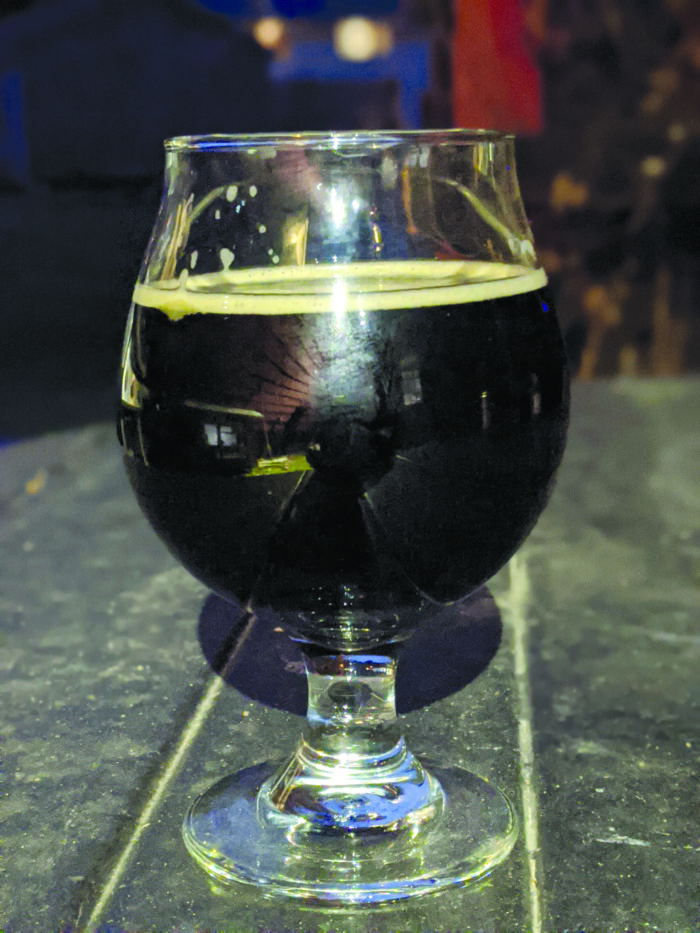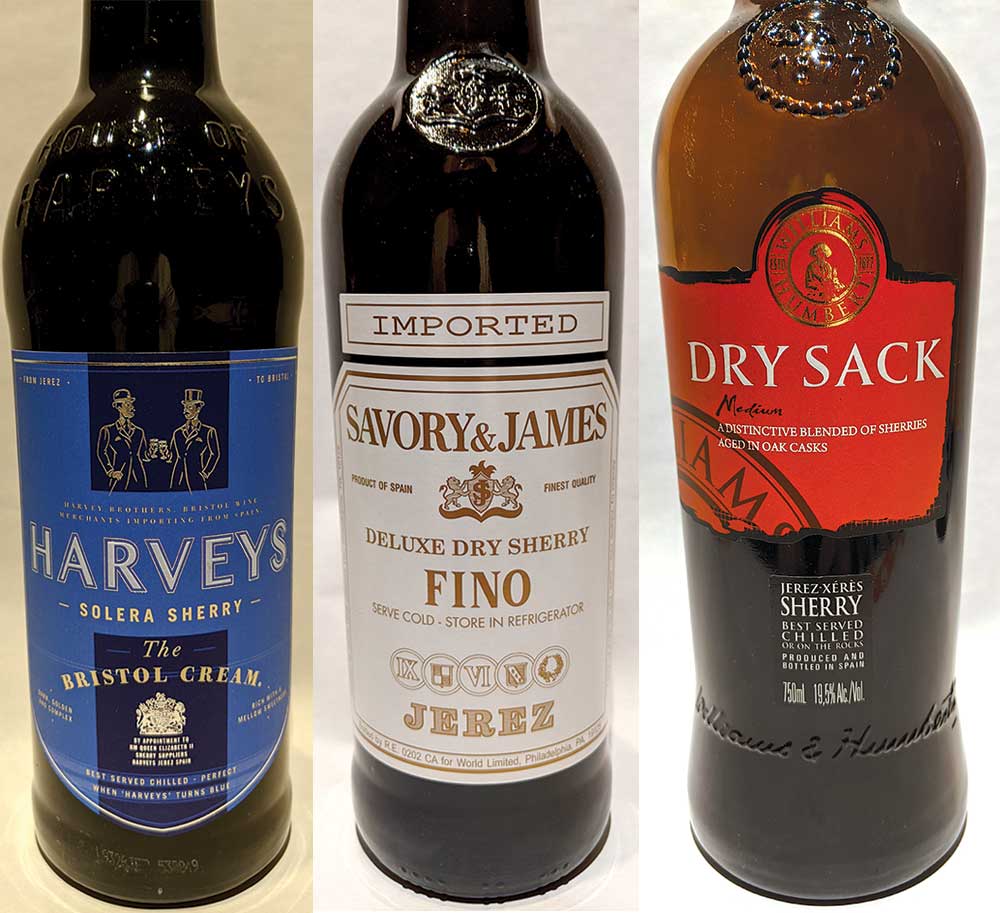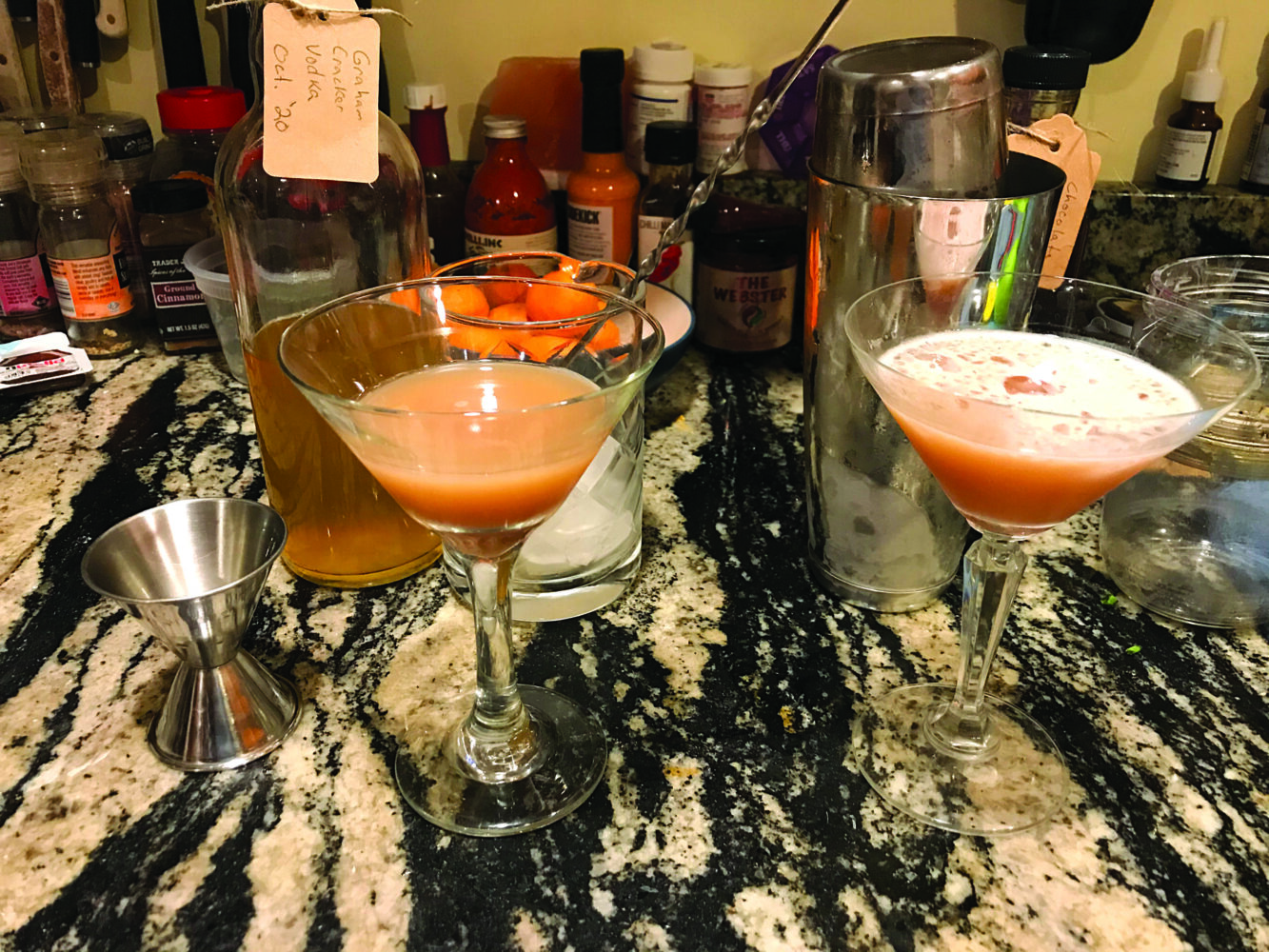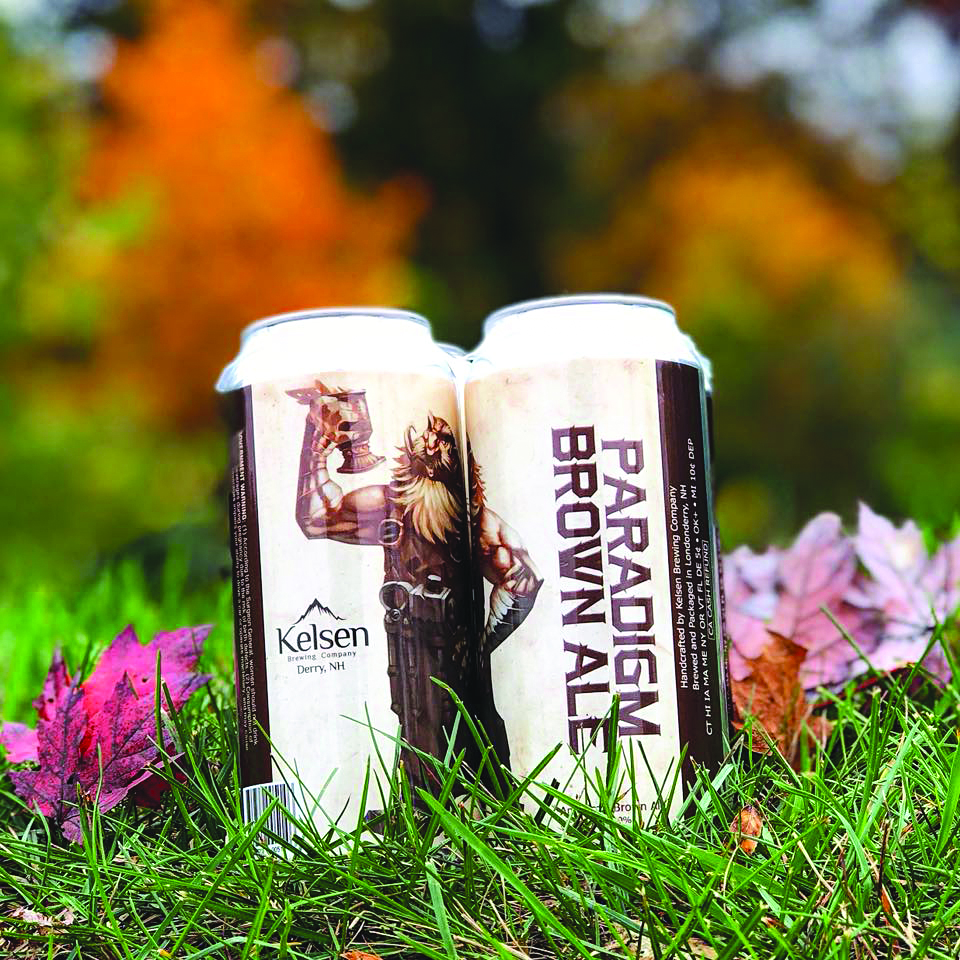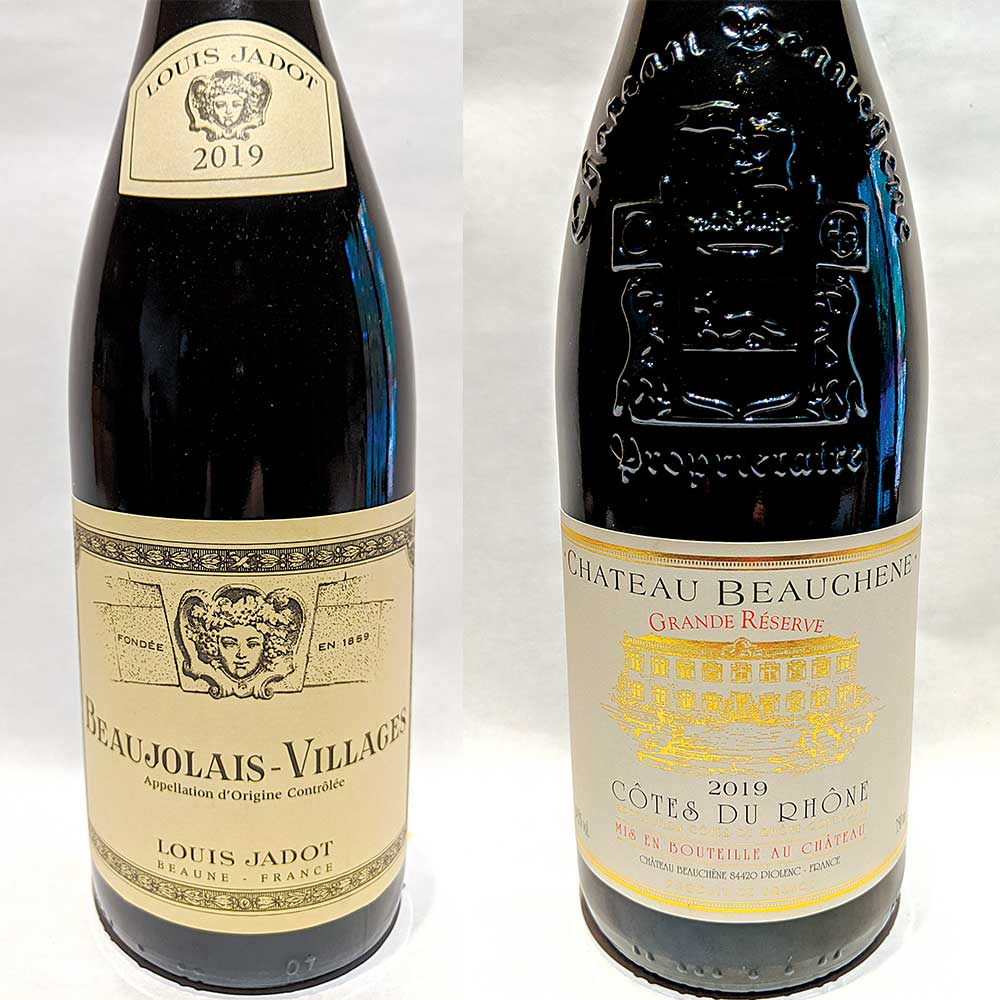Holidays are traditionally the time for extended families to gather together. Amid all the hastening and chastening, they are also a time for avoiding family. Hiding in the bathroom or the garage is a time-honored Thanksgiving activity.
But this year — as with all aspects of our lives — things are different. The family we might be the most eager to avoid may also be the same people we’ve been with 24 hours a day for the last nine months. At this point most of us have used up pretty much every viable excuse to leave a room.
Except perhaps one: a cocktail.
Please notice that I have specified “A” cocktail. Aside from flirting with dangerous habits or an outraged liver, heavy drinking rarely produces the outcome you might be looking for. Before you get to the Comfortably Numb stage, you will probably pass through the Karaoke stage, and even the “Let Me Text the Relatives and Tell Them What I Really Think Of Them” stage — neither of which are likely to give you the sense of peace you are looking for.
Leaving the room to make a drink, however, especially at the holidays, is a culturally sanctioned escape from playing Pictionary. “I’m just going to make a drink; go ahead and start without me,” is a tacitly accepted Holiday Get Out of Jail Free Card.
There are two approaches to the Escape Cocktail:
Fast and Easy: Get into the kitchen, make a simple drink, drink it, and get back out to the living room without spending too much of your rapidly diminishing social capital.
Slow and Complicated: Make something that will involve so much time and effort that nobody will be tempted to help you, and at the same time everyone will pretty much avoid and then forget about you altogether.

Thanksgiving Cocktail No. 1 – Fast and Easy: The Jack-In-The-Box
2 oz. Calvados, AppleJack or other apple brandy
2 oz. Pineapple juice
2 dashes bitters (I measured this out and two dashes = about 25 drops)
Combine ingredients over ice and shake thoughtfully. Don’t smash the ice up this time.
Strain into a martini glass.
The Jack-In-The-Box is a classic cocktail from the 1970s. It is different enough from what you are used to drinking to be interesting, but not so different as to be threatening. You don’t need threatening. Not right now.
Your experience drinking a Jack-In-The-Box will be highly subjective, depending on what you’ve been snacking on. If you’ve been eating something sweet, this will taste a little … off. If you’ve been eating something salty on the other hand, you will need one hand free to make a chef’s kiss gesture upon drinking it.
For those of us who are also from the ’70s, the JIB goes spectacularly well with homemade Chex Mix, or as we called it in my youth, Nuts & Bolts (see box).

Thanksgiving Cocktail No. 2 – Slow and Complicated: The Cranberry Cobra
½ oz. lemon juice
¾ oz. jalapeño rum (see below)
1½ blisteringly cold vodka
1 oz. cranberry syrup (see below)
½ oz. 100 percent cranberry juice
1 bottle Fever Tree Aromatic Tonic
Shake everything but the tonic over ice, as vigorously as you see fit.
Pour into a tall Collins glass, over more ice.
Top with tonic and stir gently.
This is a Thanksgiving riff on a cocktail called a Cobra Verde, which is frankly delicious, but pretty summery. The Midori that gives the original drink its verde has been replaced with cranberry syrup and cranberry juice. Tasty-But-Pricey Mexican pepper liqueur has been replaced with homemade jalapeño rum.
Is it delicious? Yes. Is it Thanksgiving-colored? Yup. How long will it keep you in the kitchen? Anywhere from 20 minutes to four days.
Cranberry Syrup
1 part sugar
1 part 100-percent cranberry juice – NOT cranberry juice cocktail
Bring both ingredients to a boil in a small saucepan and cook until the sugar dissolves completely — about two minutes.
Actually that’s it. You will probably want to let it cool before actually using it in a cocktail.
So, right now, if you are a thoughtful reader, you are asking why you can’t just use cranberry juice and simple syrup in the Cranberry Cobra and skip the syrup making altogether.
Seven words for you — Apple. Pie. Ala. Mode. With. Cranberry. Syrup.

Jalapeño Rum
1 liter bottom-shelf white rum
4-5 jalapeños, roughly chopped.
Combine peppers and rum in a wide-mouthed airtight jar. Store someplace cool and dry.
Let it macerate for up to a week, but taste it after three days.
Shake twice a day, which gives you a convenient week-long excuse to leave a room. “Oh, sorry — I have to go shake the rum.”
When the rum is at the right level of flavor and heat for you, filter it through a coffee filter, bottle and label.
According to the website for the Tasty-But-Pricey Mexican pepper liqueur, they combine specially grown-in-the-moonlight ancho peppers and “pure cane spirits,” which sounds like white rum to me. Why bottom-shelf? Any subtle rum flavors will be blown out by the Angry Jalapeño Brothers.
This rum is absolutely delightful and will revolutionize your bloody marys.
1970s Era Nuts & Bolts
½ cup salted butter (1 stick)
2 Tablespoons full-sodium soy sauce
1¼ teaspoons seasoned salt
¼ teaspoon garlic salt (If there was any way to cram more salt into this, we didn’t know about it in the ’70s.)
2¾ cups Corn Chex
2¾ cups Rice Chex
2¾ cups Wheat Chex
1½ cups cocktail peanuts (Oh, wait – apparently there is a way.)
1½ cups sesame sticks
Preheat oven to 275 degrees F.
Melt butter in a shallow pan. Stir in soy sauce, seasoned salt and garlic salt.
Add cereal, peanuts and sesame sticks. Mix until all pieces are coated.
Place on a shallow baking pan with sides.
Bake for 40 minutes, stirring every 10 minutes.
“Wait,” I hear you saying, “what about the pretzels?
Funny you should ask.
I have a theory about pretzels; it’s part of my Grand Unified Snack Theory. Take a handful of pretzels. They’re fine. They aren’t exciting, but there’s nothing particularly wrong with them, either. Now, put them in a snack mix. They immediately become the worst thing in that snack mix. Sesame sticks, on the other hand, immediately become the best part of a snack mix. It’s a mystery of science.
Featured photo: Happy Thanksgiving. Courtesy photo.

